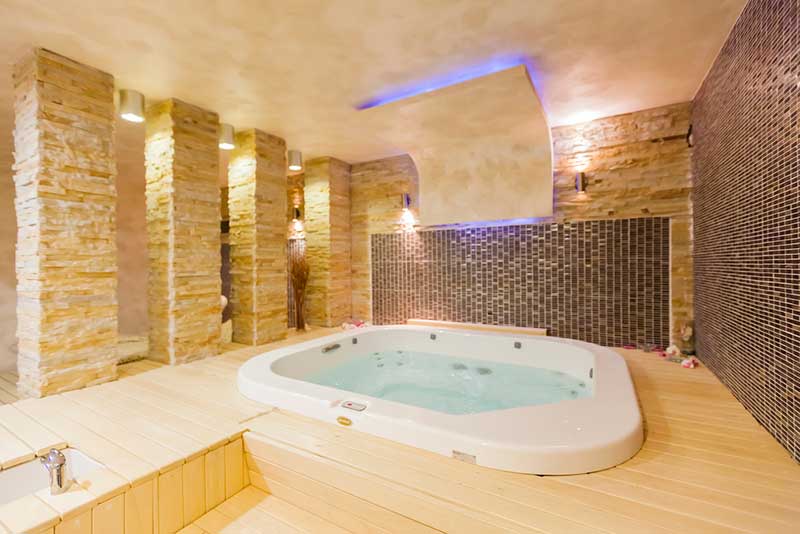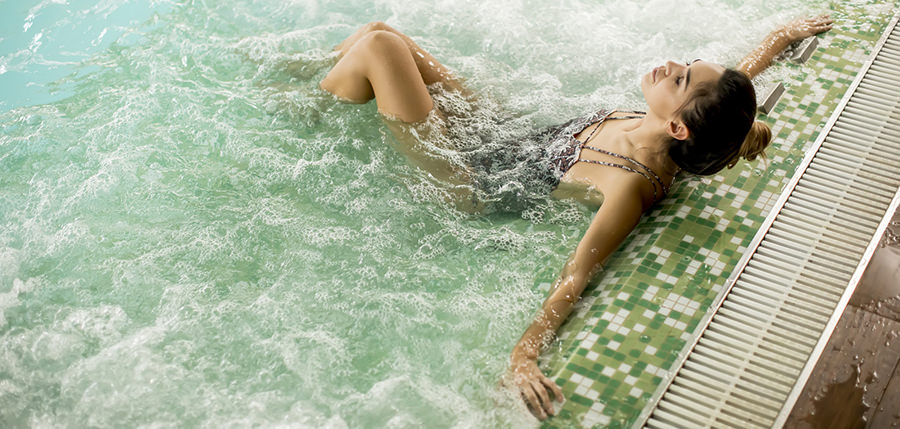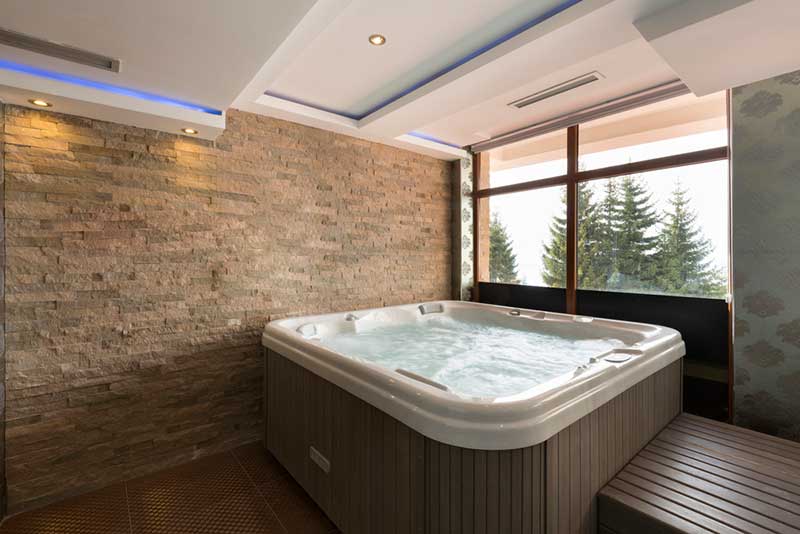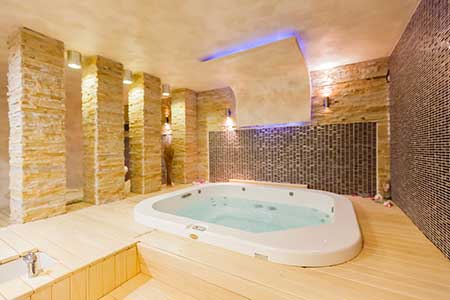
A couple of days ago, I went out to use my hot tub and discovered that when I touched the heater it was very warm. This made me worried as I hadn’t noticed this was an issue before. I decided to do some investigating to find out why the heater felt so hot and whether this was dangerous or completely normal.
So, should a hot tub heater be hot to the touch? In general, a hot tub heater shouldn’t feel hot to the touch. It may feel warm, but it shouldn’t be so hot as to make it uncomfortable to hold your hand there for any length of time.
It’s only natural for a hot tub heater to get warm since heating the water in your spa requires a lot of energy. However, if your heater feels excessively hot this is a sign of a problem.
Is It Normal For a Hot Tub Heater To Feel Warm?
Modern hot tub heaters are designed to be relatively cool to the touch, even when they are in operation. After all, a burning hot heater would represent a safety hazard to anyone using the tub. Depending on the type of heater you’re using and the temperature of the water, you may notice that your hot tub heater feels a little warm when you place your hand on it.
Yet it shouldn’t feel so hot that it is burning. If this is the case, there is almost certainly going to be some kind of problem with the heating element and without swift action to remedy the issue, the element will eventually fail.
If your hot tub heater feels just warm, though, there may not be a problem. When the water in your hot tub has reached its optimal temperature a lot of energy is being used to maintain it. This means that the heater may not feel as cold as it would when cold water has just been added to the tub.
In fact, some people worry that their hot tub heater isn’t working properly because it still feels cold after switching it on for the first time after filling the spa with fresh water. This is rarely the case. It takes some time for the heater to warm up the water to a usable temperature, so the heater will continue to feel cool for some time before finally beginning to warm up.

Sometimes, you may notice a hot spot in your hot tub heater. In such cases, the heater will generally feel relatively cool to the touch but small areas of it may be much warmer. This is often a sign of hardness build-up inside the system or of a problem that is just starting to arise. If you notice hot spots in your hot tub heater while the rest of it feels cool you should seek advice from an experienced hot tub engineer who will be able to investigate the source of the issue and suggest a suitable rectification if necessary.
What Are The Signs That A Hot Tub Heater Element Is Damaged?
If you’re worried that the element of your hot tub heater is malfunctioning or damaged you need to know the signs to look out for that indicate a problem.
If the water in the tub isn’t heating up over time, this is clearly a sign of an issue, as is the breaker constantly tripping. However, the source of the problem could be one of several things. Before investigating what is causing the problem, you need to turn of the power to your hot tub as it’s dangerous to work with electricity at the best of times, but especially around water.
You can test whether the cause of a tripped breaker is a bad heating element by disconnecting the copper wires or tabs between the heater element and spa pack. After disconnecting them, switch the power to the tub back on. Should the breaker remain on, you can tell that your heater is the source of the problem and a replacement element will be required.
If the breaker isn’t tripping but the tub still won’t heat up, you can test the voltage to your heater with a multimeter. This will pinpoint the cause of the issue. If you have a 240 volt spa, you should test both of the element’s leads simultaneously. If the multimeter has a reading of 240 volts, the element will be causing the issue. With a 120 volt spa, the process is the same but of course the reading should be 120 volts. On the other hand, in both cases if the multimeter reading is zero, your issue lies with its circuit board.
There is another way to test that involves using an OHMs test. This checks the element’s resistance. You can do this by turning off the power to the tub, disconnecting the copper wires or tabs that go to the water heater element and then switch the multimeter onto the OHM setting. When you test both of the heater element’s leads the multimeter should have a reading of 9 – 14 OHMs if the element isn’t the problem. Conversely, if the meter reads zero or shows open, the element is the source of the issue.

If the heater element is the problem you must choose whether to replace the entire heater assembly or only the element itself. If your heater assembly is several years old, you should probably consider replacing the entire heater since scale and corrosion over time will cause deterioration. If your heater assembly is relatively new, though, a new element should suffice.
How Can I Prevent My Hot Tub Heater Element From Developing Problems?
A problematic hot tub heater element will prevent you from enjoying your spa but it’s possible to protect it from damage if you carry out regular maintenance.
To keep your heater element in good condition for as long as possible you need to ensure that the water chemistry in your tub is properly balanced at all times. This will guard against corrosion in the tub and prolong the lifespan of both the heating element and the heater itself.
Every time you maintain your hot tub, you need to flush the air out of the system since air inside the hot tub lines may cause premature failure of the heating assembly. You should also ensure that the filter is cleaned regularly since clogged-up filters prevent the water from flowing properly to the heater. This eventually causes burn out of the heating assembly. Therefore, you should regularly check the filter and replace or clean it whenever required.
Why Is The Plug Of My Hot Tub Hot?
Sometimes, the hot tub heater feels the right temperature but the hot tub’s plug becomes excessively hot. This could indicate an issue. Heating the water inside the hot tub certainly uses plenty of power but the plug of any household appliance, regardless of its size or nature, should never be hot when you touch it. Power cords need to be appropriately sized for the load that is being placed on the property’s circuits. If the plug feels hot when you touch it, you need to unplug your tub straight away.
It’s possible that your hot tub’s load may exceed the capacity for carrying the current of the circuit that you’re using. For example, your hot tub may need 30 amps of current but your wiring on the circuit that is being used may only be appropriate for 15 amps or less. This means that the wires will be unable to carry enough current to your hot tub and extra frictional heating will be occurring to the copper wires in the walls.
As a result, the wires inside the wall will be becoming hotter than they should be and the heat will be transferred to anything that is connected to the wires, including the hot tub’s plug.
Should you discover that your hot tub plug is becoming hot to the touch it’s important to unplug it immediately for your safety, refrain from using the tub and call an experienced electrician to offer you advice and inspect your spa set-up.
Related Questions
How hot should a hot tub be? Most hot tub users prefer to keep their tub at a temperature of between 100 and 102 degrees Fahrenheit, although the maximum temperature that a hot tub can reach is 104 degrees Fahrenheit.
How long will it take to heat up my hot tub? The answer to this depends on several factors. For a start, it depends on how big your hot tub is and how full it is with water. It also depends on the temperature that you’ve selected for the water to reach. A further consideration is the location of the tub and the ambient temperature of the air around it. However, as a rough guide, it can take anywhere between 4 hours and 12 hours for your tub to get to an appropriate temperature for use.

